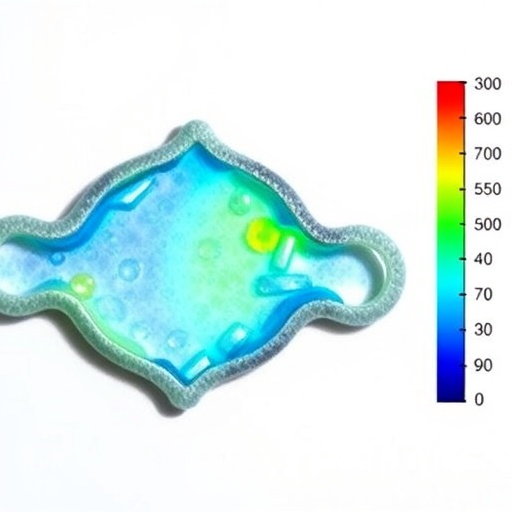In the relentless battle against environmental pollution, microplastics have emerged as a formidable adversary, infiltrating ecosystems and threatening biodiversity on a global scale. As scientific communities intensify efforts to detect and quantify these minute pollutants, the accuracy and automation of identification methods become pivotal. A groundbreaking study published recently tackles a persistent challenge in microplastic research: the refinement of automated spectral matching in micro-Fourier-transform infrared (µFTIR) spectroscopy. The research, spearheaded by Kozloski, Cowger, and Arienzo, pushes the frontier of microplastic identification by addressing false identifications and enhancing the precision of automated µFTIR spectral analysis.
Microplastics, typically defined as plastic particles smaller than 5 millimeters, require highly sensitive analytical methods to detect and categorize. Among various techniques, µFTIR spectroscopy has gained prominence owing to its ability to provide molecular fingerprints of polymers with micron-scale spatial resolution. The method essentially compares the infrared spectrum of an unknown particle against a reference spectral library, pinpointing its polymer type. However, this identification process is often compromised by false positives and ambiguous matches, stemming from spectral noise, overlapping bands, and library limitations.
The study outlined by Kozloski et al. rigorously examines the pitfalls of automated spectral matching workflows for µFTIR identification and introduces improvements that systematically reduce erroneous classifications. The research team highlights that conventional automated software tools, although efficient, can be misled by spectral artifacts and environmental contaminants, leading to misidentification of microplastics or nonplastic materials. These inaccuracies propagate through environmental datasets, skewing assessments of pollution levels and sources.
Central to their investigation is the optimization of spectral matching algorithms that govern automated identification. The researchers employ advanced statistical techniques to refine metric thresholds, thereby filtering out low-confidence matches without sacrificing sensitivity. By recalibrating these parameters, the team successfully minimizes false positive rates. This nuanced balance between specificity and sensitivity is crucial—rejecting true positives undermines detection efforts, while accepting poorly matched spectra inflates contamination estimates.
Furthermore, Kozloski and colleagues expand the spectral reference libraries to encompass a wider diversity of polymer types and degradation states. Aging, weathering, and biofouling alter the spectral characteristics of microplastics, complicating their recognition. By integrating spectra from environmentally aged polymers and including background materials that commonly interfere, the enhanced libraries allow automated systems to discriminate more effectively in complex samples.
Another pivotal advancement comes from the introduction of decision-tree classifiers that interpret multiple spectral quality indicators simultaneously. This multi-parameter approach assesses peak intensity ratios, baseline stability, and signal-to-noise ratios, integrating these into a composite match score. Such machine learning-inspired methodologies elevate the confidence in automated classifications and are shown to outperform single-metric thresholding.
The implications of these improvements resonate beyond methodological refinement. Robust and accurate automated µFTIR analysis accelerates large-scale monitoring of microplastic pollution in oceans, rivers, and soils. It also reduces analyst bias and labor intensity in routine sample processing, offering scalability necessary for global environmental surveillance initiatives. This capability aligns with urgent policy demands for evidence-based interventions in plastic waste management.
Importantly, the study underscores the necessity for transparency and standardization in spectral matching protocols. Divergent practices across laboratories have created challenges in data comparability. The authors advocate for open-access spectral libraries and cross-validation exercises to build communal confidence in automated identifications. Their findings serve as a clarion call toward consensus and collaboration in environmental microplastic research.
The research further discusses how automation, when carefully calibrated, can distinguish between synthetic polymers and naturally occurring biogenic particles that mimic plastic spectra, such as chitin or cellulose derivatives. This distinction is vital to avoid overestimation of anthropogenic microplastic burdens, informing more accurate ecological risk assessments.
Beyond accuracy, computational efficiency is enhanced through streamlined workflows and batch processing capabilities integrated into the new software iterations described. Such advancements reduce turnaround times from sample acquisition to result dissemination, enabling real-time pollution mapping and rapid policy responses in contaminated regions.
The study’s dataset comprises a myriad of microplastic forms sourced from laboratory-generated reference standards as well as field-collected samples subjected to environmental weathering. This comprehensive approach ensures that the improvements are tested against practical challenges encountered in routine monitoring and research applications.
Looking ahead, the authors foresee integrating complementary analytical techniques, such as Raman spectroscopy and pyrolysis-gas chromatography-mass spectrometry, to corroborate µFTIR results and overcome its limitations in resolving complex polymer blends and additives. Multimodal identification strategies promise further reductions in false alarms and bolstered reliability.
The intersection of machine learning with µFTIR spectral interpretation is a promising avenue highlighted in this work. Training classifiers on extensive labeled datasets can autonomously refine detection criteria, dynamically adapting to emerging contamination patterns and novel polymer types introduced by evolving plastic materials in the environment.
Ultimately, this study by Kozloski and colleagues represents a significant stride toward fully automated, high-fidelity microplastic identification. By systematically addressing false positives and enhancing accuracy, their work elevates µFTIR spectroscopy from a labor-intensive instrument to a cornerstone analytical platform capable of underpinning environmental plastic pollution mitigation policies worldwide.
As the world grapples with the pervasive and persistent nature of plastic pollution, innovations like these exemplify the fusion of analytical chemistry, data science, and environmental stewardship. Accurate monitoring built on sound automation not only deepens scientific understanding but also empowers regulatory frameworks poised to protect ecosystems and public health from the insidious threat of microplastics.
Subject of Research: Automated µFTIR spectral matching for microplastic identification, focusing on reducing false identifications and improving analytical accuracy.
Article Title: Moving toward automated µFTIR spectra matching for microplastic identification: addressing false identifications and improving accuracy
Article References:
Kozloski, R., Cowger, W. & Arienzo, M.M. Moving toward automated µFTIR spectra matching for microplastic identification: addressing false identifications and improving accuracy. Micropl.& Nanopl. 4, 27 (2024). https://doi.org/10.1186/s43591-024-00106-5
Image Credits: AI Generated
DOI: https://doi.org/10.1186/s43591-024-00106-5
Tags: accuracy in microplastic detectionautomated spectral matching techniqueschallenges in environmental monitoringenhancing microplastic research methodologiesenvironmental pollution and microplasticsfalse positives in spectral analysisimproving analytical methods for microplasticsmicroplastic identification methodspolymer classification using µFTIRprecision in microplastic identification processesspectral library limitations in µFTIRµFTIR spectroscopy advancements





